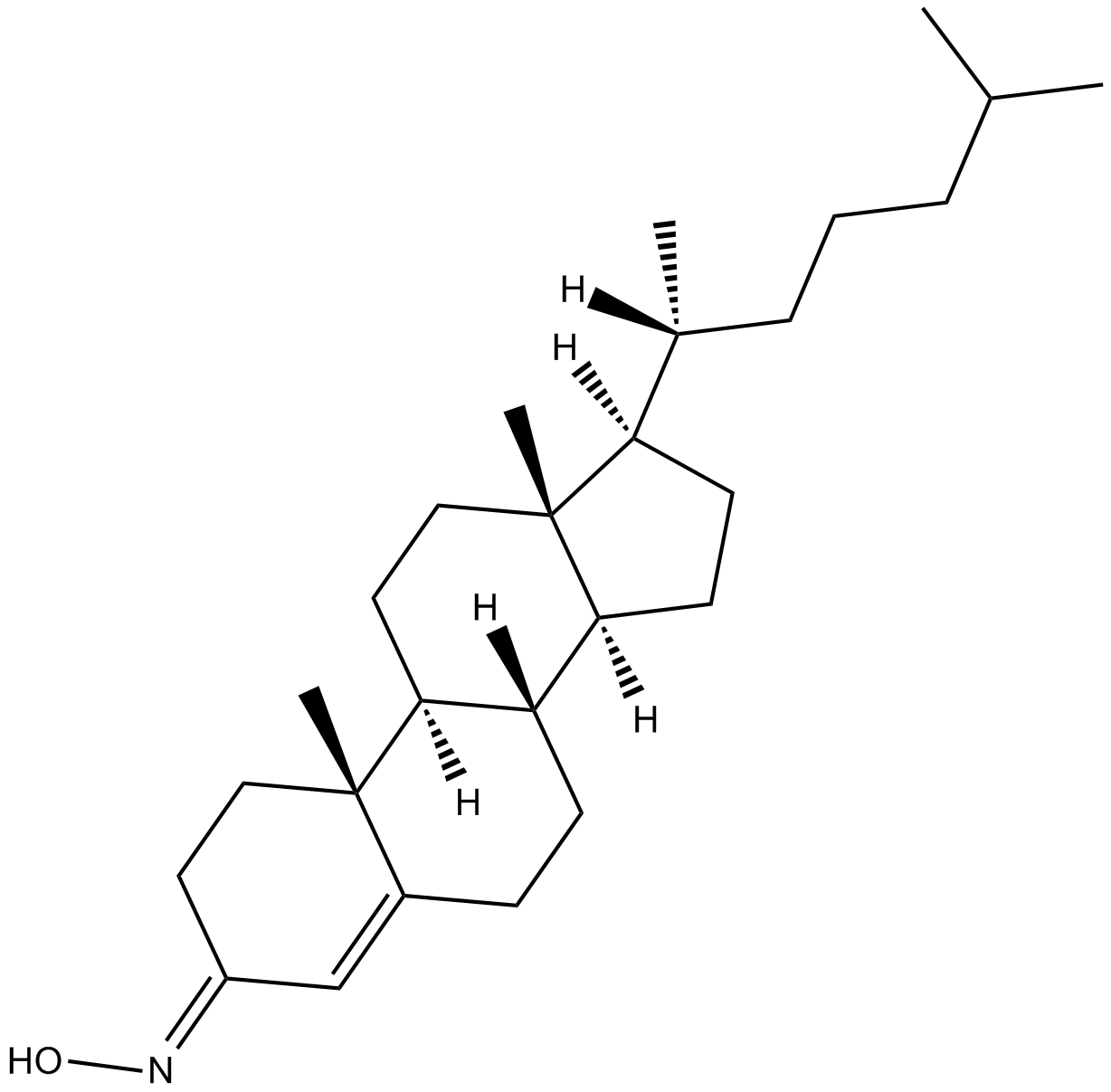TRO 19622 (Synonyms: NSC 21311) |
| Catalog No.GC13726 |
TRO 19622 (TRO 19622) is a mitochondrial-targeted neuroprotective compound with mean EC50 value for increasing cell survival is 3.2±0.2 μM.
Products are for research use only. Not for human use. We do not sell to patients.

Cas No.: 22033-87-0
Sample solution is provided at 25 µL, 10mM.
Olesoxime (TRO 19622) is a mitochondrial-targeted neuroprotective compound with mean EC50 value for increasing cell survival is 3.2±0.2 µM.
Exposure to Olesoxime (TRO 19622) (ranging from 0.1 to 10 µM) at 1 h after plating significantly protects primary embryonic rat spinal MNs (that had been cultured for 3 days without brain-derived, ciliary and glia-derived neurotrophic factors) from cell death. At a concentration of 10 µM, Olesoxime (TRO 19622) maintains survival of 74±10% of the neurons supported by a combination of neurotrophic factors (brain-derived, ciliary and glia-derived neurotrophic factors). The mean EC50 in this assay is 3.2±0.2 µM. In addition to preserving MN cell bodies, Olesoxime (TRO 19622) also promotes the outgrowth of neurites. At a concentration of 1 µM, which increases cell survival by only 38%, Olesoxime (TRO 19622) increases overall neurite outgrowth per cell by 54%[1]. Olesoxime (TRO 19622) belongs to a new family of cholesterol-oximes identified for its survival-promoting activity on purified motor neurons deprived of neurotrophic factors. Olesoxime (TRO 19622) targets proteins of the outer mitochondrial membrane, concentrates at the mitochondria and prevents permeability transition pore opening mediated by, among other things, oxidative stress[2].
Daily administration of Olesoxime (TRO 19622) (3 or 30 mg/kg sc) to adult mice for more than 2 months is well tolerated without toxicity or adverse effects[1]. When animals are treated orally for 5 days following the lesion, Olesoxime (TRO 19622) increases motor neuron cell body survival in a dose-dependent manner with significant rescue at the highest dose of 100 mg/kg. At this dose, motor neuron survival is 29 ±2% (n=18) corresponding to a 42% increase in survival compared with vehicle-treated animals[3]. Paclitaxel-treated rats that receive prophylactic treatment with 3 mg/kg/d or 30 mg/kg/d Olesoxime (TRO 19622) have 239±17.6 and 247±14.4 IENFs per cm, respectively. For both doses, the decreases are significantly less than the 46% decrease seen in the Paclitaxel-treated rats administered vehicle. However, both doses produce decreases (25% and 22%) that are significantly different relative to the naïve control group[4].
Reference:
[1]. Martin LJ, et al. Olesoxime, a cholesterol-like neuroprotectant for the potential treatment of amyotrophic lateral sclerosis. IDrugs. 2010 Aug;13(8):568-80.
[2]. Bordet T, et al. Olesoxime (TRO19622): A Novel Mitochondrial-Targeted Neuroprotective Compound. Pharmaceuticals (Basel). 2010 Jan 28;3(2):345-368
[3]. Bordet T, et al. Identification and characterization of cholest-4-en-3-one, oxime (TRO19622), a novel drug candidate for amyotrophic lateral sclerosis. J Pharmacol Exp Ther. 2007 Aug;322(2):709-20.
[4]. Xiao WH, et al. Olesoxime (cholest-4-en-3-one, oxime): analgesic and neuroprotective effects in a rat model of painful peripheral neuropathy produced by the chemotherapeutic agent, paclitaxel. Pain. 2009 Dec 15;147(1-3):202-9
Average Rating: 5 (Based on Reviews and 31 reference(s) in Google Scholar.)
GLPBIO products are for RESEARCH USE ONLY. Please make sure your review or question is research based.
Required fields are marked with *




















